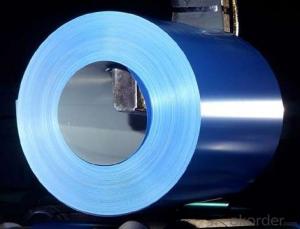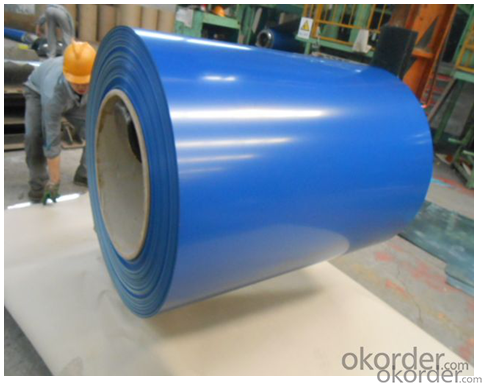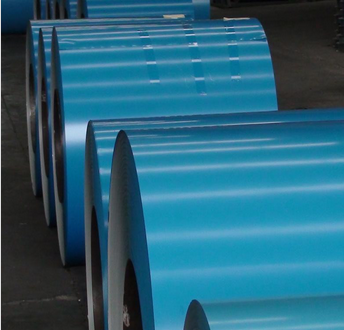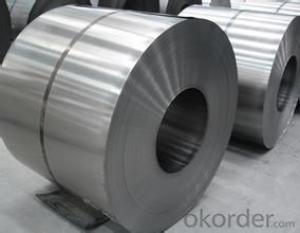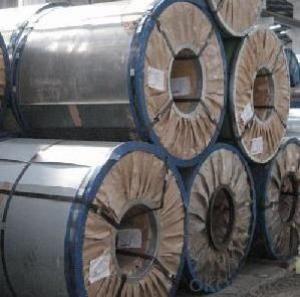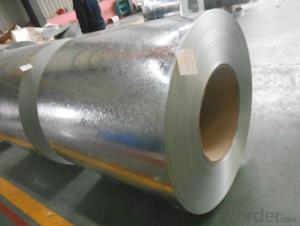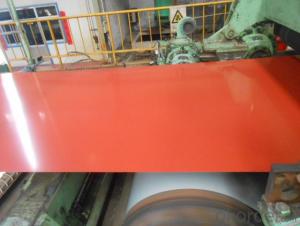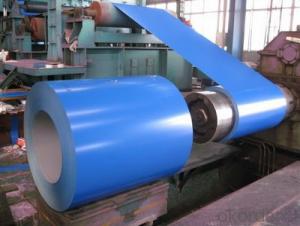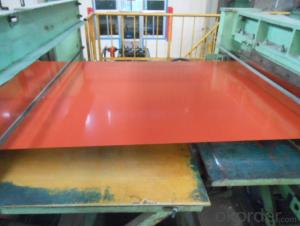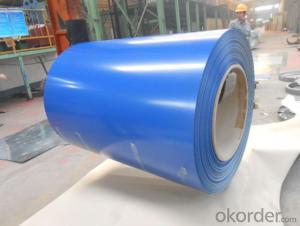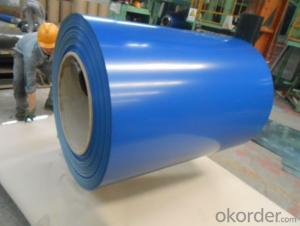PPGI,Pre-Painted Steel Coil in High Quality Blue Color
- Loading Port:
- Shanghai
- Payment Terms:
- TT OR LC
- Min Order Qty:
- 200 m.t.
- Supply Capability:
- 20000 m.t./month
OKorder Service Pledge
OKorder Financial Service
You Might Also Like
1. Pre-Painted Galvanized/Aluzinc Steel Coil Description:
With GI as base material, after pretreatment (degrease and chemical treatment ) and liquid dope with several layers of color, then after firing and cooling, finally the plate steel is called pre-painted galvanized (aluzinc) steel. Pre-painted galvanized steel is good capable of decoration, molding, corrosion resistance. It generally displays superior workability, durability and weather resistance.
2.Main Features of the Pre-Painted Galvanized/Aluzinc Steel Coil:
• Excellent process capability
• Smooth and flat surface
• Workability, durability
• Excellent heat resistance performance
• High strength
• Good formability
• Good visual effect
3.Pre-Painted Galvanized/Aluzinc Steel Coil Images
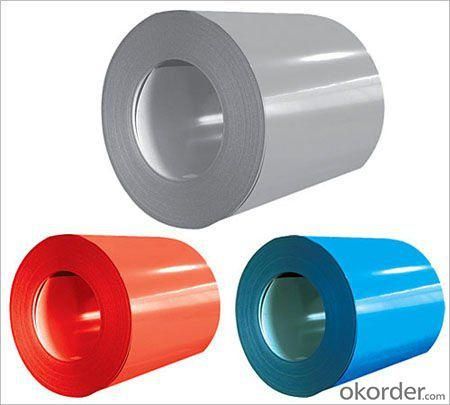
4.Pre-Painted Galvanized/Aluzinc Steel Coil Specification
Standard: AISI, ASTM, BS, DIN, GB, JIS
Grade: DX51D, DX52D
Thickness: 0.17-2.0mm
Brand Name: KMRLON
Model Number: coil
Type: Steel Coil
Technique: Cold Rolled
Surface Treatment: Coated
Application: Boiler Plate
Special Use: High-strength Steel Plate
Width: 20-1250mm
Length: customized
commoidty: pre-painted galvanized steel coil
Thickness: 0.13-4.0mm
width: 20-1250mm
zinc coating: 40-180g/m2
printing thickness: top side: 20+/-5 microns, back side: 5-7 microns
color: all RAL color
surface treatment: color coated
coil weight: 4-7 tons
coil ID: 508/610mm
packaging: standard seaworthy packing
5.FAQ of Pre-Painted Galvanized/Aluzinc Steel Coil
1. What’s the application of this product?
Roof, roof structure, surface sheet of balcony, frame of window, etc.
2. What’s the brand of the paint?
We use the best brand of all of the word—AKZO.
3. How to guarantee the quality of the products?
We have established the international advanced quality management system,every link from raw material to final product we have strict quality test;We resolutely put an end to unqualified products flowing into the market. At the same time, we will provide necessary follow-up service assurance.
4. How long can we receive the product after purchase?
Usually within thirty working days after receiving buyer’s advance payment or LC. We will arrange the factory manufacturing as soon as possible. The cargo readiness usually takes 15-25 days, but the shipment will depend on the vessel situation.
- Q: How to solve steel plate storage
- Avoid steel plates touching the ground, fixing steel coils, and using pads to reduce accidental or dangerous movement.
- Q: How are steel coils made?
- Steel coils are made through a process called hot rolling, where a large slab of steel is heated and passed through a series of rolling mills to gradually reduce its thickness and shape it into a coil.
- Q: Maybe it is obvious. But i have thought alot about it.I thought steel at a cool temperature was unbreakable. I am not one for science or physics or engineering (i am a political science major). But i don't understand why the planes that struck the world trade center on 9-11 didn't just dent the side and fall,How did the place break the steel? Was it the velocity? Is steel easily broken?I realized that i wasn't taught how the planes broke the steel, and that no one ever asked. I searched the web and i couldn't find the answer or even anyone who had asked the question before.(i don't care about conspiracy theories, i just want scientific facts)
- steel is not unbreakable. the world trade centers had a steel infrstructure, but were mostly glass and materials with many other flaws. steel is not the top of the rocwell scale(materials rated by thier hardness) when the planes impacted the outside of the buildings, you have to take into account that the planes skins and infrastructure where made of aluminum(too keep weight down) so once the outer skin of the planes was breached, you have to account for the heat created by burning fuel, friction, and the momentum of a vehicle that weighs tons hitting an immovible object. just keep in mind that if you propel a piece of straw at an proper speed, you can have it impale a full grown palm tree
- Q: How are steel coils processed and shaped for specific applications?
- Steel coils are processed and shaped for specific applications through a series of steps. First, the coils are uncoiled and flattened to remove any bends or curls. Then, they undergo various processes such as cutting, slitting, or shearing to achieve the desired dimensions. Next, the steel is often subjected to heat treatment, such as annealing or tempering, to enhance its strength and flexibility. Finally, the steel is shaped into specific forms using techniques like rolling, bending, or stamping, to meet the requirements of different applications ranging from automotive parts to construction materials.
- Q: How are steel coils used in the production of steel connectors?
- Steel coils are used in the production of steel connectors by being fed into a machine where they are unwound and straightened. The straightened steel is then cut into appropriate lengths and shaped into the desired connector form. This process helps ensure consistency, strength, and efficiency in manufacturing steel connectors.
- Q: What are the challenges in storing and handling steel coils?
- Storing and handling steel coils present several challenges, including their sheer weight and size, which can make transportation and storage difficult. The coils need to be stored in a way that prevents damage and deformation, as steel coils are susceptible to rust, corrosion, and scratching. Additionally, ensuring proper ventilation and moisture control is crucial to prevent the growth of mold or moisture-related damage. Safety precautions must also be taken during handling and transportation to avoid accidents or injuries.
- Q: How are steel coils used in the manufacturing of automotive exhaust systems?
- Steel coils are used in the manufacturing of automotive exhaust systems as they provide the necessary strength and durability required for this critical component. These coils are typically shaped and formed into various parts such as pipes, mufflers, and catalytic converters, which are then welded together to create the exhaust system. The steel coils also undergo additional processes like coating or galvanizing to enhance corrosion resistance, ensuring the longevity of the exhaust system.
- Q: Can steel coils be used in the automotive industry?
- Yes, steel coils can be used in the automotive industry. Steel coils are commonly used in the manufacturing of various automotive parts and components, including body panels, chassis, frames, and suspension systems. The high strength and durability of steel make it an ideal material for ensuring the safety and structural integrity of vehicles. Additionally, steel coils can be easily shaped and formed to meet the specific design requirements of different automobile models, making them a versatile choice for the automotive industry.
- Q: Is a steel plate the same as a steel coil?
- You must have an open book and a flat plate, and it is a little bit harder to cut the parts than the plate.
- Q: Can steel coils be used in the production of automotive parts?
- Yes, steel coils can be used in the production of automotive parts. Steel coils are commonly used in the manufacturing of various automotive components such as body panels, chassis parts, springs, and engine components due to their strength, durability, and formability. The coils are processed and shaped into the desired automotive parts using various techniques such as cutting, stamping, welding, and forming.
Send your message to us
PPGI,Pre-Painted Steel Coil in High Quality Blue Color
- Loading Port:
- Shanghai
- Payment Terms:
- TT OR LC
- Min Order Qty:
- 200 m.t.
- Supply Capability:
- 20000 m.t./month
OKorder Service Pledge
OKorder Financial Service
Similar products
Hot products
Hot Searches
Related keywords
